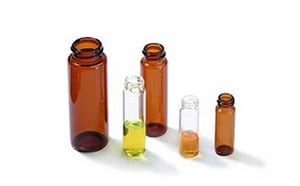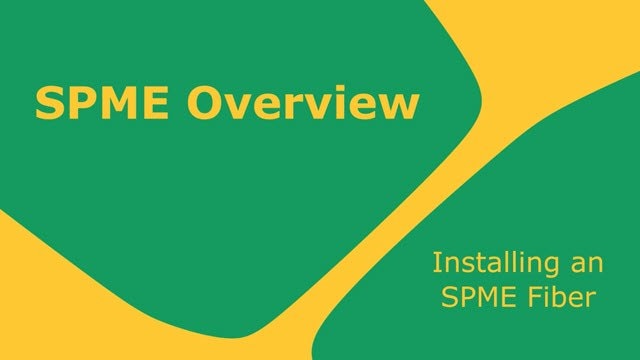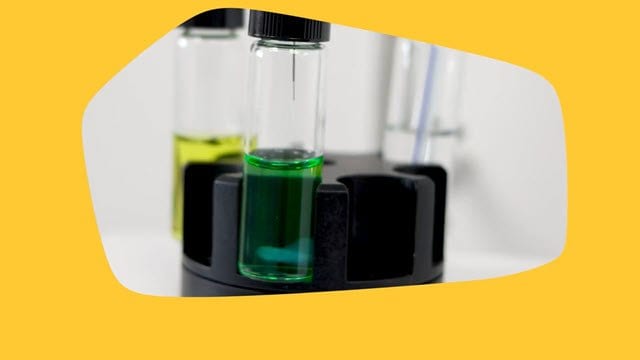Solid Phase Microextraction (SPME)
Solid phase microextraction (SPME) is an innovative and sensitive solvent-free sample preparation technology. Based on the principle of adsorption/absorption and desorption, SPME uses a coated fiber to concentrate volatile and semi-volatile compounds from a sample.
Featured Categories
Discover our premium products for accurate results in HPLC, GC, Karl Fischer titration, & more. From trace analysis to safety equipment, we've got you covered.
Discover advanced SPME solutions: smart fibers, nitinol-core fibers, BioSPME, for efficient solvent-free sample preparation.
Achieve superior GC performance with our columns, consumables, and accessories. Explore Supelco® offerings.
SPME is widely used for a variety of applications involving environmental, biological and pharmaceutical samples, foods and beverages, flavors and fragrances, forensics and toxicology and product testing. Typical uses include:
- Environmental analyses of water & air samples
- Headspace analysis of trace impurities in polymers and solid samples
- Part-per-trillion odor analyses
- Flavor analyses of food products
- Forensic analysis of arson and explosives samples
- Toxicology analyses of blood alcohol or drugs in urine and serum
How Does SPME Work?
SPME uses a fiber coated with an extraction phase: a liquid (polymer), a solid (sorbent), or a combination of both. The coated fiber is housed in a protective needle and attached to a holder that looks like a syringe.
When the fiber is exposed to a sample, the sample’s analytes partition from the sample matrix into the stationary phase until an equilibrium is established. The fiber’s coating extracts compounds from the sample either by absorption (liquid coatings) or adsorption (solid coatings). After a prescribed extraction time, the fiber is removed and inserted directly into a chromatographic instrument, usually gas chromatography (GC) or HPLC, for desorption and analysis. The desorption in GC of analytes is carried out thermally, whereas HPLC uses a solvent for desorption into a liquid-phase.
Advantages of SPME
SPME combines analyte sampling, isolation, and enrichment into one, simple step. By controlling the polarity and thickness of the fiber coating, maintaining consistent sampling time, and controlling several other extraction parameters, SPME allows an analyst to ensure highly consistent and quantifiable results from samples, even when analytes are at low concentrations.
Other benefits of SPME include:
- Solvent-free
- Easy to automate
- Non-destructive to samples
- Applicable for nearly any sample or matrix
- Fibers used are reusable and inexpensive
- Small fiber size makes them agreeable to field work
- Compatible with GC or HPLC instrumentation
SPME Fibers for GC Analysis
Conventional SPME is used to extract and concentrate analytes for the purpose of GC analysis. Extraction is carried out either by direct immersion (DI-SPME), where the fiber is directly immersed in the liquid sample, or headspace SPME (HS-SPME), where the fiber is exposed in the vapor phase above a sample.
Supel™ BioSPME for LC-MS Analysis
Supel™ BioSPME is a bioanalytical microsampling and sample preparation technique used to quickly and selectively extract a broad range of analytes from biological samples while repelling unwanted macromolecules (e.g., lipids, proteins). Subsequent analysis is usually performed by LC-MS. Supel™ BioSPME operates via direct extraction, involving no sample pretreatment, and provides a non-exhaustive, equilibrium-based extraction.
Visit our document search for data sheets, certificates and technical documentation.
Related Articles
- Recommended fibers based on analyte type and molecular weight; tips for SPME fiber selection for a variety of applications.
- Supel™ BioSPME 96-Pin devices enhance speed and simplicity for plasma protein binding studies and LCMS analyses.
- Answers and tips relating to the application of the solid phase micro-extraction technique.
- SPME fibers with CAR/PDMS and PDMS/DVB coatings on nitinol core assembly enhance fiber performance for solid phase microextraction.
- Selecting the Appropriate SPME Fiber Coating –Effect of Analyte Molecular Weight and Polarity
- See All (24)
Related Protocols
- Aldehydes and ketones are ubiquitous air pollutants. Along with esters and ethers, they are major components of indoor air pollution and are therefore important for industrial hygiene applications.
- Separation of various pyrazines and sulfur compounds including carbon disulfide and dimethyl disulfide.
- Overcoated SPME fiber enables low-level BPA analysis in food via SPME-GC-MS/MS, meeting tighter migration limit regulations.
- High performance, reliability, and reproducibility of HS-SPME in combination with GC/MS for the determination of VOCs in water was proven in an interlaboratory trial. The new ISO 17943 using HS-SPME is an improvement on existing official methods for this determination in terms of sensitivity and selectivity.
- Separation of 2-Isopropyl-3-methoxypyrazine 20 ppt; 2-Isobutyl-3-methoxypyrazine; 2-Methylisoborneol; (±)-Geosmin 10 ppt
- See All (15)
Find More Articles and Protocols
How Can We Help
In case of any questions, please submit a customer support request
or talk to our customer service team:
Email custserv@sial.com
or call +1 (800) 244-1173
Additional Support
- Chromatogram Search
Use the Chromatogram Search to identify unknown compounds in your sample.
- Calculators & Apps
Web Toolbox - science research tools and resources for analytical chemistry, life science, chemical synthesis and materials science.
- Customer Support Request
Customer support including help with orders, products, accounts, and website technical issues.
- FAQ
Explore our Frequently Asked Questions for answers to commonly asked questions about our products and services.
Related Videos
To continue reading please sign in or create an account.
Don't Have An Account?





